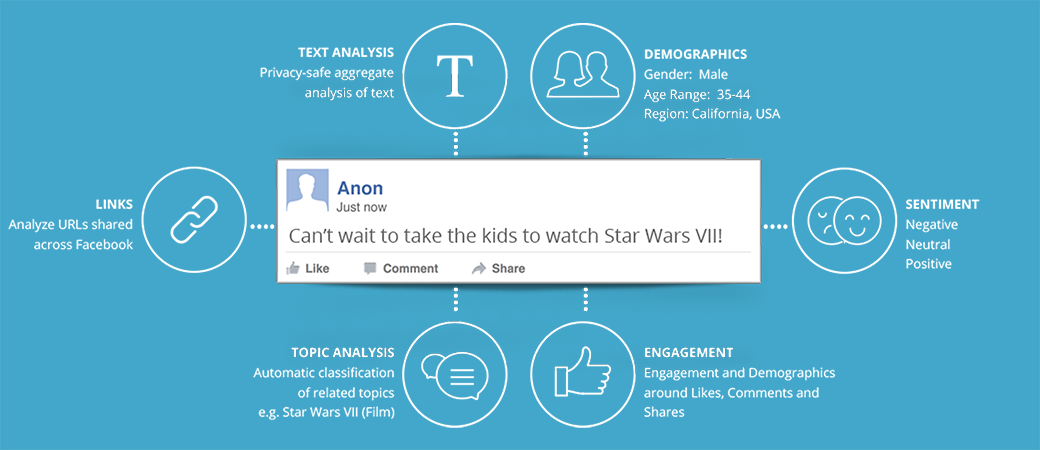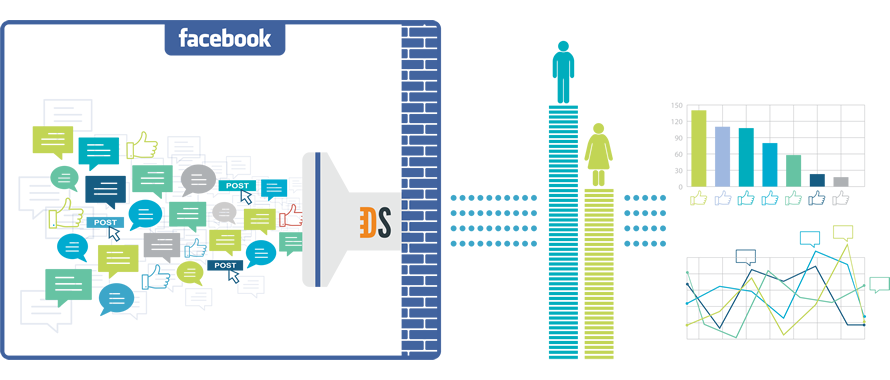With digital ad spend set to outstrip TV, is your ad budget working hard enough?
DataSift, our official pylon partner and the company that provide us with Facebook, Instagram, Videos & Tumblr data, have written us a blog post. Zuzanna Pasierbinska-Wilson, the VP Marketing at DataSift, who is responsible for driving all aspects of the marketing strategy, jots down her thoughts on how the introduction of Facebook topic data is changing advertising budgets and campaigns.
According to a recent report from eMarketer, 2017 will be the year that sees digital ad spend surpass TV ad spend for the first time ever. The report predicts that TV ad spend will hit $72.01 billion while digital ad spend will be $77.37 billion, and it’s a shift that has also been forecast by both Magna Global and ZenithOptimedia.
An initial reaction to that is - ‘ad buyers and planners, why on earth did it take so long?!’ The potential for digital advertising to really connect and engage with an audience has been well documented – not just any audience either, but the right audience. However, as ad spend flows rapidly into online video, mobile and social platforms, are your ad dollars really doing their job?
What makes your audience tick?
For your ad spend to really have an impact, you need to understand who your audience is, where and how they consume media and what makes them tick. Knowing this allows you to plan exactly where your money should be directed. Facebook topic data has been a complete game-changer for advertisers, giving them access to one of the world’s largest sources of public opinion data, with 1.04 billion daily active users on average for December 2015. Here are three ways Facebook topic data can transform your advertising campaigns:
1) Find your real audiences
In the days of traditional advertising, finding the right audience for your brand was at times, little more than a finger in the air process. We *think* that our audience watches this programme, so we *think* we will reach our audience by booking an ad in this timeslot. But no one was ever too sure.
Facebook topic data provides unparalleled insight into your audience and allows you to challenge existing assumptions about your core demographics. One ad agency wanted to improve social engagement and presence for a snack food but had struggled to extract meaningful insight from costly focus groups.
The agency used Facebook topic data to test its assumptions about its audience, having based much of its activity around the idea that the snack would be consumed by men under 25, watching sport. Analysing millions of anonymised interactions over 10 days, the agency discovered that the demographic segment engaging the most was in fact women aged between 35 and 64 and that most people sharing content about the game were doing so with their family, not friends.
This meant that the agency could now create campaigns for the snack brand that were more relevant to this demographic and the insight could also inform the future creative for the brand, with a move to more family-oriented stories.

2) Determine what content actually engages people
The TV-watching process has now changed forever – where once we watched intently, perhaps sharing our thoughts with those in the same room - we now multi-screen and share our thoughts with the world. Engagement is now an integral part of TV promotional activity and can even help shape the narrative of the show.
When a major TV channel wanted to understand if it could have better control over the feedback loop between engagement on Facebook and tune-in on television, it turned to Facebook topic data.
It created an index of the Facebook engagements with all of its programming, capturing seven million interactions in just over a week. Using VEDO - the intelligence inside DataSift that allows you to organise human data based on its meaning – the TV channel was able to identify the shows, themes and content with the most Facebook engagement and analyse this on a minute-by-minute basis by gender, age and state.
This meant the TV channel could see which shows were resonating most with which segments of the population and consequently tailor its marketing efforts for these shows to the most engaged demographic groups. It could also change the way that social calls-to-action were promoted in its shows in order to boost engagement.
3) Continually evolve your approach in real time
In 2016, a real time approach is of huge importance in advertising. The TV channel outlined earlier had also analysed the timing of engagement around its shows, with Facebook topic data revealing that most engagement took place at the start of the commercial break.
Most viewers were engaged with the show and were waiting for the commercials to air their opinions. Previously, the shows’ hashtags had been promoted at the start of the segment – with this new insight promotion was moved to the end. Furthermore, the continued analysis of Facebook topic data meant the channel could make decisions in real-time, tailoring its promotional content while a show was actually airing, to best resonate with audience engagement on Facebook.
If you're interested in seeing how Facebook topic data works, we'd love show you. Just send an email to [email protected] and we'll be able to set up a demo and provide more information.

